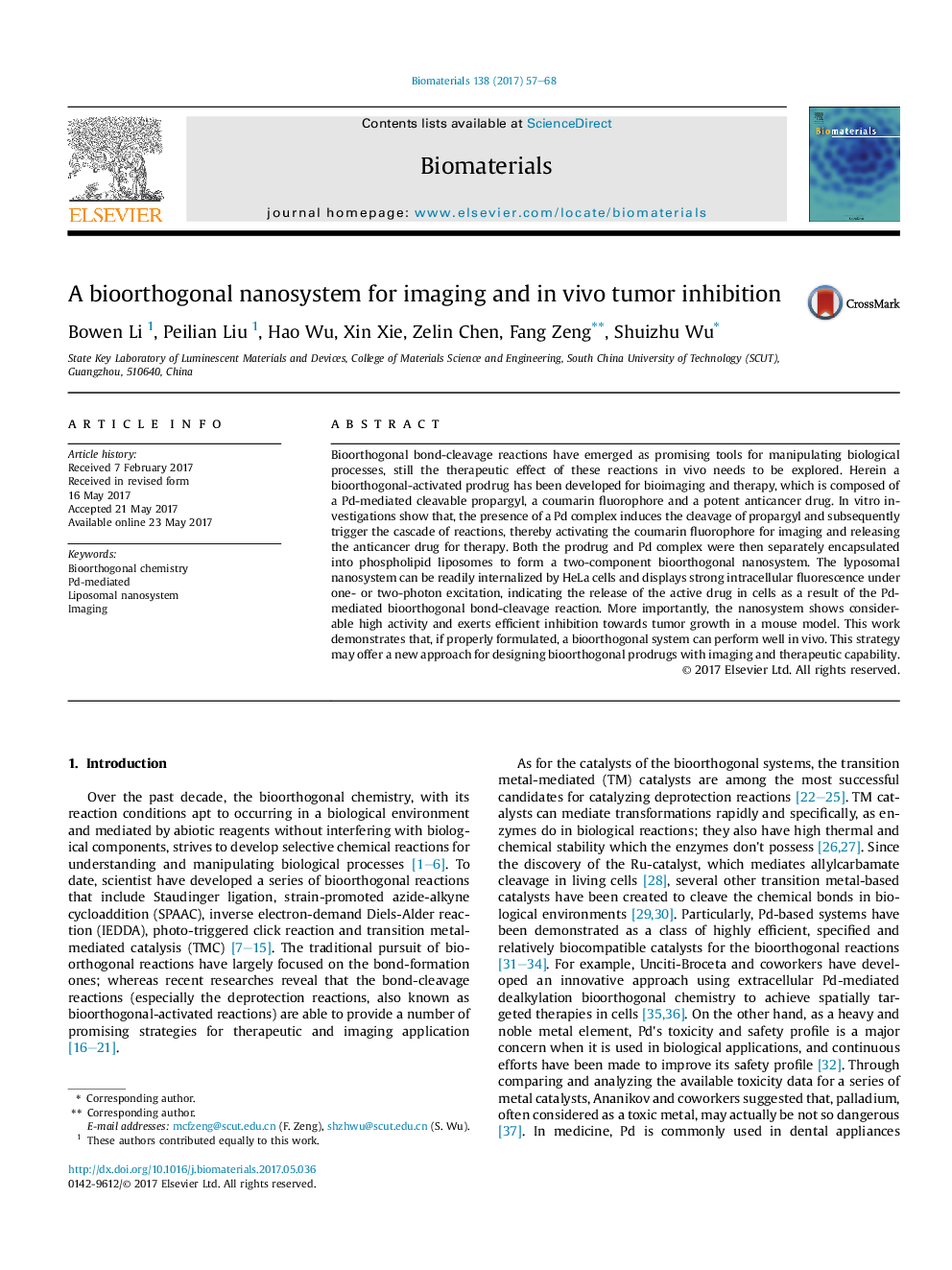| Article ID | Journal | Published Year | Pages | File Type |
|---|---|---|---|---|
| 6450630 | Biomaterials | 2017 | 12 Pages |
Bioorthogonal bond-cleavage reactions have emerged as promising tools for manipulating biological processes, still the therapeutic effect of these reactions in vivo needs to be explored. Herein a bioorthogonal-activated prodrug has been developed for bioimaging and therapy, which is composed of a Pd-mediated cleavable propargyl, a coumarin fluorophore and a potent anticancer drug. In vitro investigations show that, the presence of a Pd complex induces the cleavage of propargyl and subsequently trigger the cascade of reactions, thereby activating the coumarin fluorophore for imaging and releasing the anticancer drug for therapy. Both the prodrug and Pd complex were then separately encapsulated into phospholipid liposomes to form a two-component bioorthogonal nanosystem. The lyposomal nanosystem can be readily internalized by HeLa cells and displays strong intracellular fluorescence under one- or two-photon excitation, indicating the release of the active drug in cells as a result of the Pd-mediated bioorthogonal bond-cleavage reaction. More importantly, the nanosystem shows considerable high activity and exerts efficient inhibition towards tumor growth in a mouse model. This work demonstrates that, if properly formulated, a bioorthogonal system can perform well in vivo. This strategy may offer a new approach for designing bioorthogonal prodrugs with imaging and therapeutic capability.
